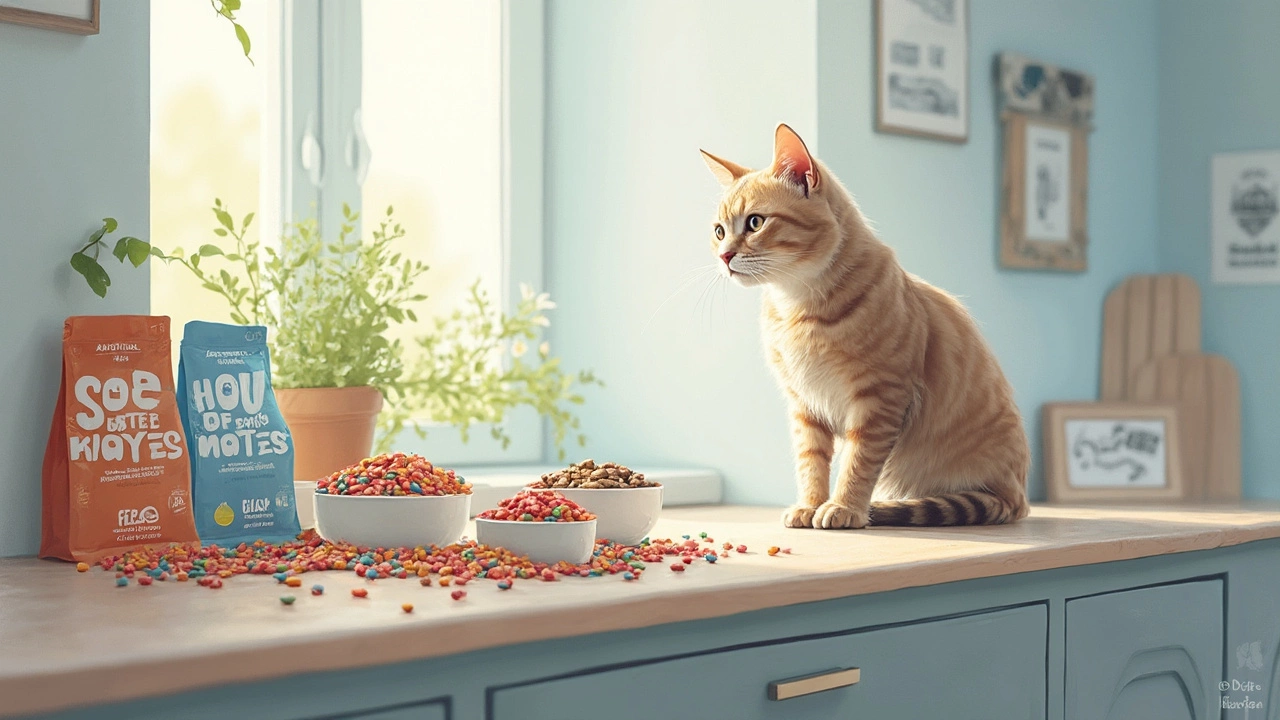Cat Food Tips: Simple Ways to Feed a Happy Healthy Cat
We all want our cats to feel great, but cat food can be confusing. The good news? You don’t need a degree in nutrition to make solid choices. Below are real‑world tips that work for most indoor cats.
Know What Your Cat Needs
Adult indoor cats usually need fewer calories than outdoor hunters because they move less. Look for a formula that provides about 250–300 calories per 100 g of food. Protein should be the first ingredient – a good sign is a meat name (chicken, turkey, salmon) right at the top.
Fat is essential for energy and a shiny coat, but keep it balanced. Too much can lead to weight gain. Aim for a fat content around 8–12 % for dry kibble and 10–15 % for wet food. Carbs aren’t a big deal for cats, but you’ll often see rice or corn; keep those under 10 % if you can.
Pick the Right Food and Serve It Right
When you shop, check the AAFCO statement – it means the diet meets basic nutritional standards in the UK. If a product claims “complete and balanced,” it should have that label.
Dry kibble is convenient, but mix in a little wet food to boost moisture intake. Cats naturally get most water from prey, so adding wet meals helps prevent urinary issues. A simple rule: at least one 85‑g can per day for a medium‑size cat.
Portion sizes on the bag are a starting point. Adjust based on your cat’s weight, activity, and body condition. A quick test: run your hand over the ribs – you should feel a thin layer of fat but still see the bone.
Store food correctly. Keep dry kibble in an airtight container to preserve freshness, and refrigerate opened cans for up to three days. Freshness matters; stale food loses palatability and nutrition.
Transition to a new brand over 7–10 days. Mix a little of the new food with the old, gradually increasing the ratio. This prevents digestive upset and lets your cat get used to the new taste.
Watch for signs of a good diet: steady weight, a clean litter box, shiny coat, and lively play. If you notice hairballs, vomiting, or weight changes, it’s time to reassess the food or talk to a vet.
Finally, treat snacks should be under 10 % of daily calories. Small pieces of cooked chicken or commercial cat treats work fine, but avoid human foods like onions, garlic, or chocolate – they’re toxic.
With these straightforward steps, you can pick a balanced cat food, serve it properly, and keep your indoor cat thriving. No jargon, just practical advice you can start using today.
Dry Cat Food: What Ingredients Are Bad for Cats?
Dry cat food may seem convenient, but it usually hides ingredients that aren't great for your cat's health. This article breaks down common additives and fillers you’ll find in dry kibble that can cause problems, from artificial flavors to unhealthy carbs. Get the facts on how these ingredients can impact your cat’s weight, digestion, and overall wellness. Learn to spot sneaky labels, and discover ways to pick better options for your furry friend. Find practical tips for choosing safer, healthier cat food without the guesswork.
